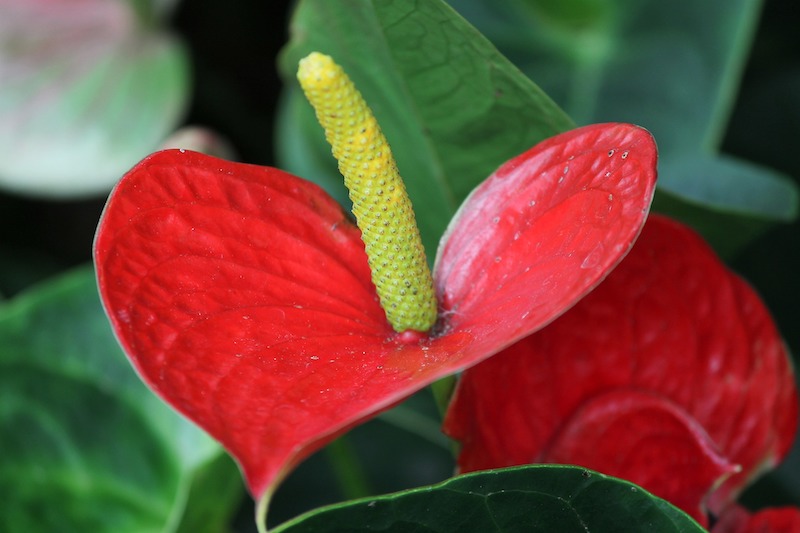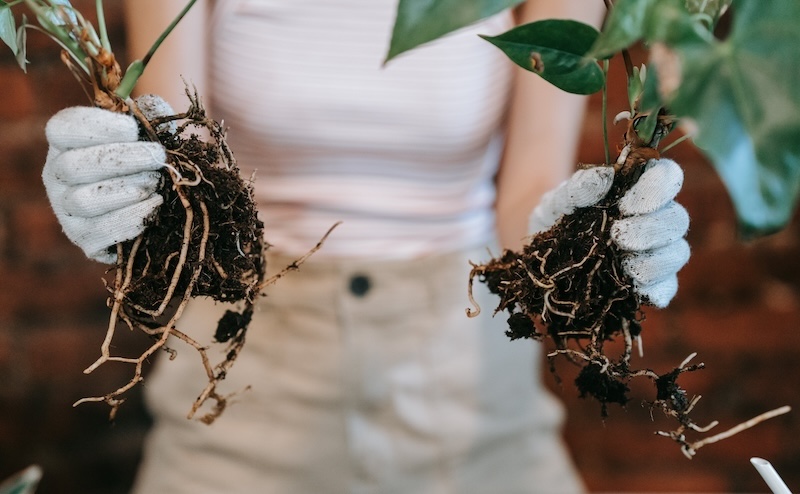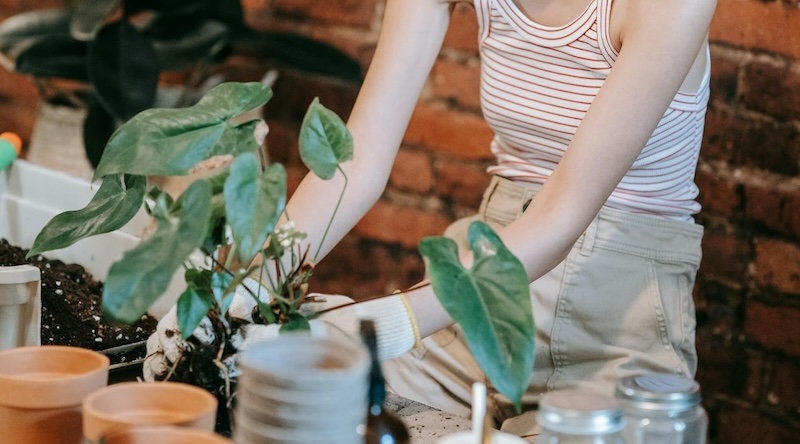Growing Anthurium
Anthuriums, also known as flamingo flower or flamingo lily, tail flower, or painted tongue plant, are durable, low-maintenance houseplants grown for their foliage and bright flower spathes. Most Anthuriums grown as houseplants are 2 to 3 feet tall, or smaller in the case of dwarf cultivars. These plants are native to tropical areas, as reflected in the ideal temperature and humidity ranges when anthuriums are cultivated as houseplants. Anthuriums are a great option for inexperienced growers. Advanced growers can enjoy Anthurium as a standard houseplant or, recognizing that many Anthuriums are epiphytes that do not need soil to grow, opt to cultivate an Anthurium in a soilless environment.

Anthurium Sunlight Requirements
Anthuriums grow best in bright indirect light, although they can tolerate all levels of indirect light. Direct light is too intense for Anthuriums and will burn the leaves. If light levels are too low, the Anthurium will grow slowly and have fewer flowers. A north- or east-facing window or shaded south- or west-facing window could provide the ideal light conditions for an Anthurium. It is possible to supplement low light conditions with a full-spectrum fluorescent or LED grow light kept on near the plant for several hours per day.
Planting Anthurium
Only transplant the Anthurium when the root system fills the existing pot. Choose a new container only slightly bigger than the existing pot. Typically, a happy anthurium is ready for repotting every two to three years. These houseplants prefer a coarse, well-drained soil and require a container with plenty of drain holes, since they hate water-logged soil. One possible soil mixture could contain equal parts peat moss, pine bark, and perlite. Another option is to utilize a blend of half cactus mix and half orchid mix. Expect to see roots growing above the soil surface after a while.
Watering Anthurium
These plants perform best with soil that is consistently moist but not wet and never completely dries out. Water the Anthurium when the top inch or so of soil in the container feels dry to the touch. Avoid using softened water. Slowly water the plant deeply, until water begins to exit through the drain holes in the bottom of the container. This tropical plant prefers a high-humidity environment. Keeping a humidifier near the plant or situating it on a pebble tray, especially during the winter months, can help this plant thrive. During warm weather, plan to water the Anthurium more frequently. Overwatering or poorly draining pots can cause leaf yellowing and damaged roots.
Fertilizing Anthurium
A regular fertilization routine will ensure vigorous growth and regular flowers on the Anthurium. Choose a fertilizer with a high phosphorus content or an N:P:K ratio of about 1:2:1 in order to encourage blooming. Use a liquid fertilizer to about half or one-quarter of the recommended strength and apply it once every two weeks from spring through early fall. When growth has slowed annually (typically late fall into winter), hold off on feeding during this rest period. Alternatively, apply a slow-release fertilizer in spring and again in summer according to label instructions.
Common Anthurium Problems
One common Anthurium problem is brown spots on leaves or brown leaf tips. This can be caused by a lack of humidity, too little or too much water, or too much sunlight. The oldest leaves on the plant normally turn yellow as they age and eventually die, but if leaf yellowing is widespread, it could indicate problems with feeding, watering, or excessive light. A period of slow growth or rest without flowering is not unusual annually; if it continues beyond the winter months, examine the environment and feeding regimen for the plant. Some possible pests of anthurium include spider mites, scale, and mealybugs.
Propagating Anthurium
Anthurium is propagated by division, stem cuttings, or root cuttings. In most cases, the easiest way to multiply Anthuriums is to simply divide the plant at the same time it is repotted. When dividing Anthurium, take the plant out of the existing pot gently and tease the roots apart to create two or more equally sized sections. For especially root-bound plants, use a sharp cutting tool to cleanly divide the root mass into segments. To take a stem cutting, use a sharp knife to cut off a section of stem that has at least two nodes and root it in water, perlite, or soil. For root cuttings, either remove a section of root when repotting the Anthurium and plant it separately or cover roots that are naturally growing above the soil line with peat moss. When growth begins in the peat moss in earnest, cut out and pot up the small new plant.

Growing Anthurium Outdoors
Anthurium can thrive outdoors year-round in USDA Zone 10 or during warm seasons elsewhere under the right conditions. These plants are sensitive to the cold and can only be kept outside when temperatures are above 60 degrees Fahrenheit. Outdoor plants must have ample shade to avoid leaf burn. Make sure Anthuriums outside are kept out of strong winds, which will dry them out quickly. Before bringing Anthuriums inside following a warm season spent outdoors, wipe or spray down the leaves with water to remove any hitchhiking pests.
 |
Author Angela Ryczkowski - Published 2-25-2023 |

